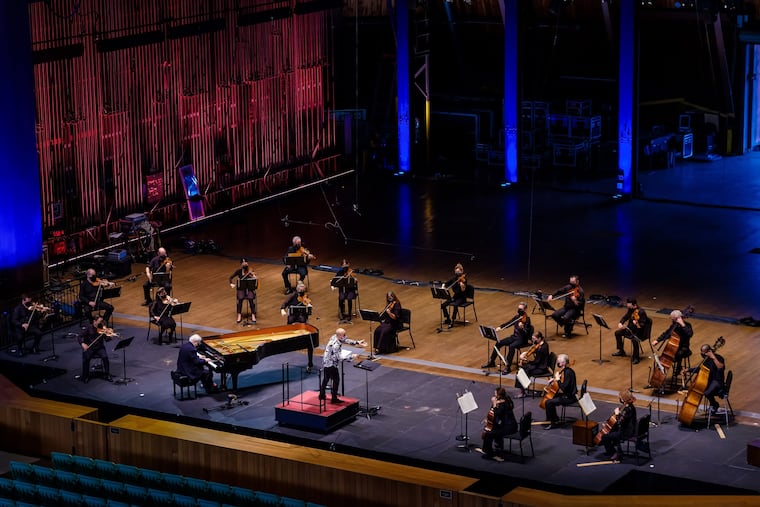Philadelphia Orchestra members approve new, deeper pay cuts
Cuts in compensation will also continue for orchestra staff and music director Yannick Nézet-Séguin.

With live concerts and the ticket revenue that comes with them gone for the foreseeable future, pay cuts for musicians of the Philadelphia Orchestra will continue for a year under the terms of a new pact.
The deal, approved this week by the orchestra’s members, ties pay in part to the fortunes of the organization. Compensation for musicians will be reduced to 75% of normal pay retroactively to Sept. 12 and through the middle of March.
Then, between March 15 and Sept. 12, 2021, pay could be lowered or slightly increased depending on the condition of the orchestra’s COVID-battered finances.
The new pay cuts replace a straight 20% reduction put in place April 1, so musicians had been earning 80% of normal pay. The new cuts are calculated based on 2019-20 wage levels; a small, previously scheduled raise during the current season won’t happen.
“We needed to do something to help,” said double bass player David Fay, chairman of the members' committee. “There is no or very little revenue from ticket sales. Depending on how we do in the second six months, hopefully we can stay at 75%. We felt it’ll help the board and management weather the storm and come out the other side hopefully in good shape.”
The orchestra last performed for a live audience in March as the full force of the pandemic was being felt across the country.
“This temporary agreement allows us to navigate these turbulent waters while staying true to the priorities of preserving the artistic and fiscal health of the organization and taking care of our people," said orchestra president and CEO Matías Tarnopolsky. "It shows great responsibility and shared sacrifice in light of an incredibly difficult situation.”
The addendum to the musicians' existing contract also suspends auditions. The full complement of members is 98 instrumentalists plus two librarians, but the orchestra has seven vacancies, which means the total membership is frozen for now at 91 instrumentalists and two librarians.
The deal has also been approved by the orchestra’s executive committee, Tarnopolsky said.
This season, a slimmed down, socially distanced, and mostly face-masked version of the ensemble has been recording concerts at an audience-free Mann Center. Those performances are being streamed online for $15. More recording is slated for November in Verizon Hall.
But online concerts do not produce nearly as much revenue as concerts before live audiences.
As for the prospect of the orchestra performing for a live audience this season, Tarnopolsky said: “I’m doubtful but am always hopeful.”
Along with the cuts to musician salaries, cuts in compensation for staff, as well as music director Yannick Nézet-Séguin, continue. A look at the orchestra’s annual budget shows how the pandemic shutdown has shrunk spending. Last year’s budget was $51 million; this year it is projected to be $37 million.
The musicians’ pay cut for the six months between March and September 2021 is structured on a sliding scale. If revenue from concerts and a potential new forgivable government-assistance loan materialize at certain levels, that would be reflected in the musicians' pay — staying as high as the current 75% of salary, or dropping as low as 60%.
Musicians' pay could be bumped up to 80% of normal salary if ticket revenue and a government loan total more than $4 million and if the orchestra’s projected net deficit comes in at no greater than $3.7 million as of March 1.
Elsewhere across the U.S., other orchestras of the Philadelphia Orchestra’s size have instituted slashes in pay. Boston Symphony Orchestra players in September agreed to a 37% reduction in compensation. The New York Philharmonic has canceled all concerts through June, even as negotiations with Philharmonic musicians continue as they receive 75% of base pay, the New York Times recently reported.
The Philadelphia Orchestra’s current musicians contract went into effect in September 2019, and called for base salaries of $137,800 per year to increase between 2% and 3% over the course of four years. This means that, after the new pay reduction, the new base pay through March 14 is about $106,000.
Titled players such as concertmaster and principals earn significantly more. The new cuts apply to these higher-paid players on the same percentage basis as the other musicians.